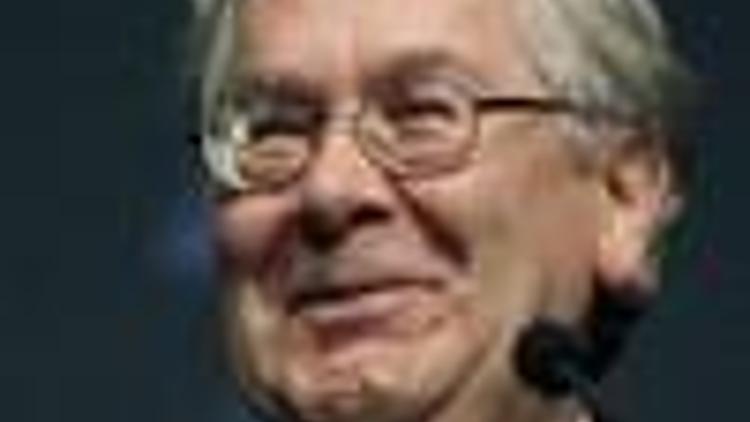Zero rate world may lie ahead
Güncelleme Tarihi:

PARIS/WASHINGTON - As major central banks slash interest rates with unexpected speed, benchmark borrowing costs are now below core inflation for the first time since the early 1980s, and policy makers are signaling they will go deeper.
Thursday’s cuts by the Bank of England and European Central Bank, which came with the Federal Reserve and Bank of Japan on the cusp of zero rates, are a bid to shock life back into their recessionary economies and strained money markets. It may be an uphill battle as consumers and businesses show greater interest in saving than spending, and banks hoard capital rather than lend it.
“It's the race to zero,” said Stewart Robertson, an economist at Aviva Investors in London. “There's no obstacle to more rate cuts.”
The U.K. central bank led by Governor Mervyn King Thursday axed its benchmark rate to 3 percent, the lowest level since 1955. The reduction of 1.5 percentage points was the biggest in 16 years. The ECB followed with its second half-point cut in a month, to 3.25 percent, and President Jean-Claude Trichet declined to rule out further moves south.
Gloomy predictions
The action in Europe, which extended to reductions in the Czech Republic, Switzerland and Denmark, followed decisions last week by the Fed to drop its key rate to 1 percent, matching the lowest in a half-century, and the Bank of Japan to cut to 0.3 percent in its first paring in seven years.
Monetary policy is being eased because the 15-month credit crisis is inflicting harsher blows to growth and inflation than central bankers anticipated just two months ago. On Thursday, the International Monetary Fund cut its month-old forecast for next year's global expansion to 2.2 percent from 3 percent, and predicted the first contraction in advanced economies since it was created in 1945. It estimated prices would rise just 1.4 percent in rich nations, less than half of this year's pace.
The conundrum for central banks is their rate cuts may still not be packing a punch, even on top of record injections of cash and a willingness to accept lower-rated collateral for their loans.
One reason: credit markets remain fragile, indicating financial institutions are still conserving cash after recording losses and writedowns of about $691 billion. The London interbank offered rate for three-month loans fell to 2.39 percent Thursday from 4.82 percent on Oct. 10.
The record drop still leaves Libor 139 basis points above the Fed's benchmark, compared with an average of 22 basis points in the five years before the global credit crisis began in August 2007.
“The problems in money markets are still quite severe,” said Dario Perkins, an economist at ABN Amro Holding in London. “Market rates are above where central banks have their rates, and that's alarming them.”
Companies retrench
At the same time, companies and consumers are retrenching in the face of slowing growth and tighter credit. In the U.S., Cisco Systems, the top maker of networking equipment, is forecasting the first revenue drop in five years because of the financial crisis. Across the Atlantic, Luxembourg-based ArcelorMittal, the world's biggest steelmaker, said diminished demand is forcing it to double production cuts.
Automakers and retailers are among the companies being battered by a collapse in consumer demand. In Japan, Toyota Motor, the world's second-largest, Thursday forecast the biggest drop in profit in at least 18 years. Macy's, Target and Gap all posted October sales declines in the U.S.
Another complication for central banks is that some financial institutions are proving averse to passing on lower rates to borrowers. HSBC Holdings, Barclays and HBOS are among U.K. mortgage lenders that have still to decide whether to follow the Bank of England's rate cut by paring their own standard variable rates. In the euro-area, banks on Thursday deposited a record 297.4 billion euros overnight with the ECB rather than lend it elsewhere.
The combination of cautious banks and reluctant spenders is forcing central banks to cut interest rates below inflation. JPMorgan Chase & Co. calculates borrowing costs adjusted for underlying inflation in developed markets fell below zero last month for the first time since the early 1980s and are still declining.
Central banks are betting that negative real interest rates will induce people to spend rather than save money that is declining in value, economists said. The strategy also aims to jolt investors and banks into seeking higher yields by making riskier long-term loans.
Rapid rate cuts are intended to avoid the fate of Japan, which endured a decade-long slump after its asset bubble burst in 1990 in part because its central bank was “initially too timid and too slow to react,” economists at Deutsche Bank said in a report.The debate over what comes next could begin at the Fed as soon as Dec. 16, when policy makers next meet amid expectations for another quarter-point cut.

